We share tips for planning a trip to Yellowstone National Park, so you can prepare for your Yellowstone road trip. This includes where to go, where to stay, and when to visit Yellowstone.
Yellowstone National Park, a natural wonderland spanning over 2.2 million acres, is a dream destination for many travelers. This is a breathtaking park and one of the best things to do in the USA.
Renowned for its geothermal features, diverse wildlife, and vast wilderness, planning a trip to this iconic park requires careful consideration and preparation.
Whether you’re a seasoned adventurer or a first-time visitor, a well-planned trip can significantly enhance your experience in this majestic landscape.
Planning a trip to Yellowstone National Park
If you’re considering a road trip to Yellowstone, selecting the right vehicle is crucial. A reliable and sturdy vehicle like a GMC can be ideal for navigating the park’s varied terrain.
For those looking to purchase a vehicle for this adventure, exploring options for a used GMC can be a wise choice, as they offer a range of vehicles that balance comfort, space, and off-road capability.
Buying a used car not only provides value for money but also ensures that you have a robust and capable vehicle to tackle the diverse landscapes and weather conditions you might encounter in Yellowstone.
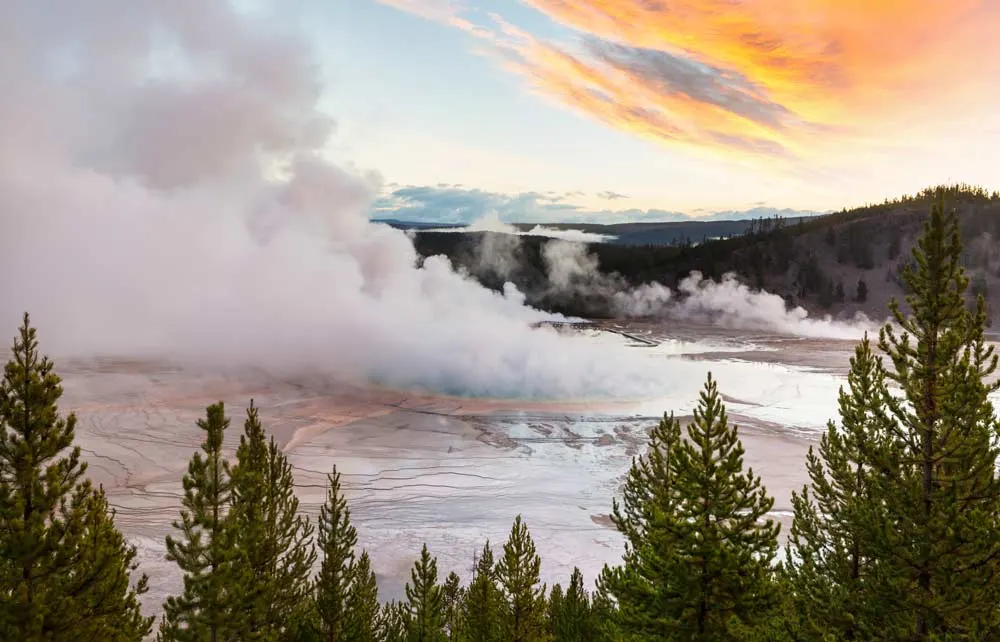
Understanding the Best Time to Visit
Timing is everything when it comes to planning a trip to Yellowstone National Park, as it is when planning on visiting the USA National Parks. The park is open year-round, but the best time to visit depends on what you want to experience:
- Summer (June to August): This is the peak season, offering warm weather and full access to park roads and facilities. It’s ideal for hiking, wildlife watching, and camping. However, be prepared for crowds.
- Autumn (September to November): With fewer crowds, fall is great for enjoying the park’s wildlife and autumn colors. Weather can be unpredictable, so pack accordingly.
- Winter (December to February): The park transforms into a winter wonderland, perfect for snowshoeing and cross-country skiing. Many roads are closed, so access is limited to snowmobiles and snowcoaches.
- Spring (March to May): Spring brings new life to Yellowstone, but access can be limited due to snow. It’s a good time for spotting baby animals and experiencing the park’s rejuvenation.
Choosing Your Transportation
When planning a trip to Yellowstone National Park, you need to consider transportation. Traveling by car to Yellowstone National Park offers unmatched flexibility and the freedom to explore at your own pace.
If you don’t own a suitable vehicle, renting an SUV or a 4WD, like a GMC, is a practical choice for navigating the varied terrain of the park. These types of vehicles are not only comfortable for long drives but also reliable in different weather conditions, especially in winter when roads can be snowy and icy.
Having a well-maintained vehicle is essential for a smooth journey, as some areas of the park can be remote and far from service stations.
Remember to keep your gas tank full, as fuel stations inside the park are limited.
Additionally, familiarize yourself with the park’s driving regulations and wildlife crossing areas to ensure a safe and enjoyable trip.
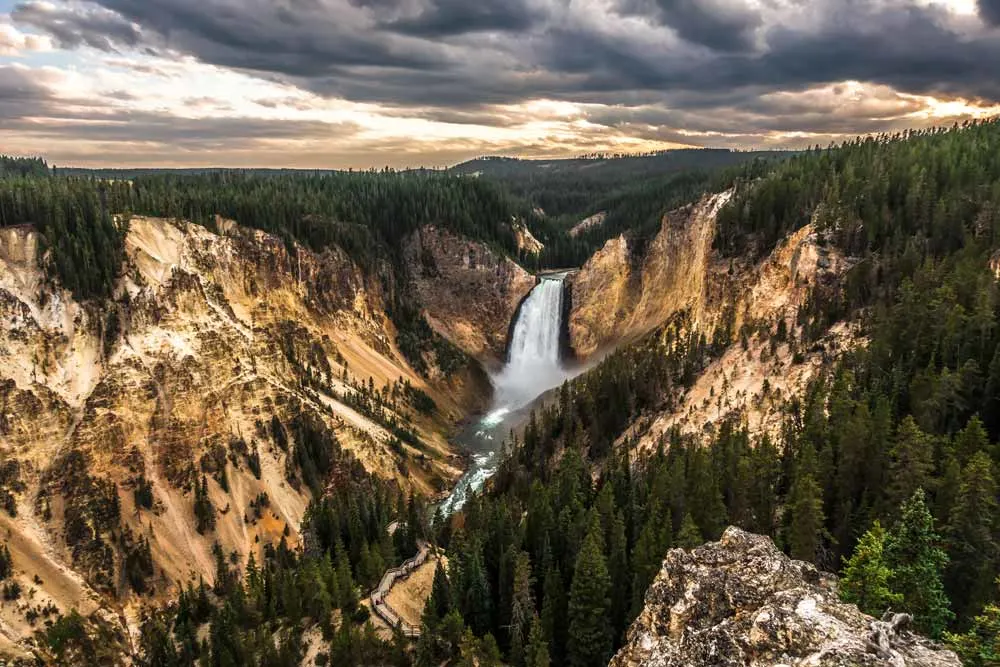
Accommodation Options
Yellowstone offers a wide range of accommodation options to suit various preferences and budgets.
From rustic campgrounds where you can sleep under the stars to upscale lodges that offer comfort and luxury, the park caters to all types of travelers. Booking your stay in advance is crucial, especially during the bustling summer months, when accommodations fill up quickly.
There are some incredible unique hotels in the US and some of those can be found in and around Yellowstone National Park, like Elk Horn Lodge.
Staying inside the park provides easy access to famous landmarks and allows you to experience the natural beauty of Yellowstone up close. Lodges, hotels, cabins, and campgrounds inside the park vary in amenities and price.
Outside the park, towns like West Yellowstone, Gardiner, and Cooke City offer a variety of lodging options, often at a more affordable cost.
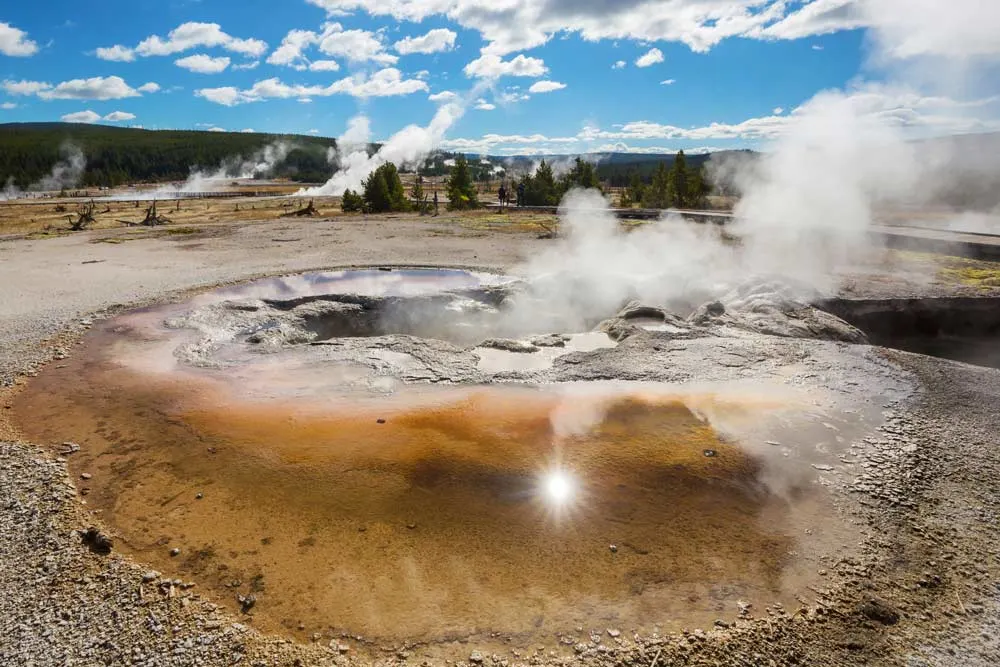
Planning what to do in Yellowstone National Park
Yellowstone National Park is immense, and it’s impossible to see everything in one visit. The park’s vastness and diversity require a well-thought-out itinerary that focuses on a few key attractions and activities.
Visiting the park’s renowned geothermal features like the iconic Old Faithful geyser, the mesmerizing Grand Prismatic Spring, and the unique Mammoth Hot Springs is a must.
Wildlife enthusiasts will find the Lamar Valley and Hayden Valley ideal for observing bison, elk, and potentially wolves and bears in their natural habitat.
For those who love hiking and outdoor activities, Yellowstone offers a range of trails, from easy walks to strenuous hikes.
Popular hiking destinations include the scenic trails to Mount Washburn and the awe-inspiring Grand Canyon of Yellowstone.
When planning your itinerary, consider the distances between attractions, as travel times can be longer than expected due to the park’s size and potential wildlife traffic jams.
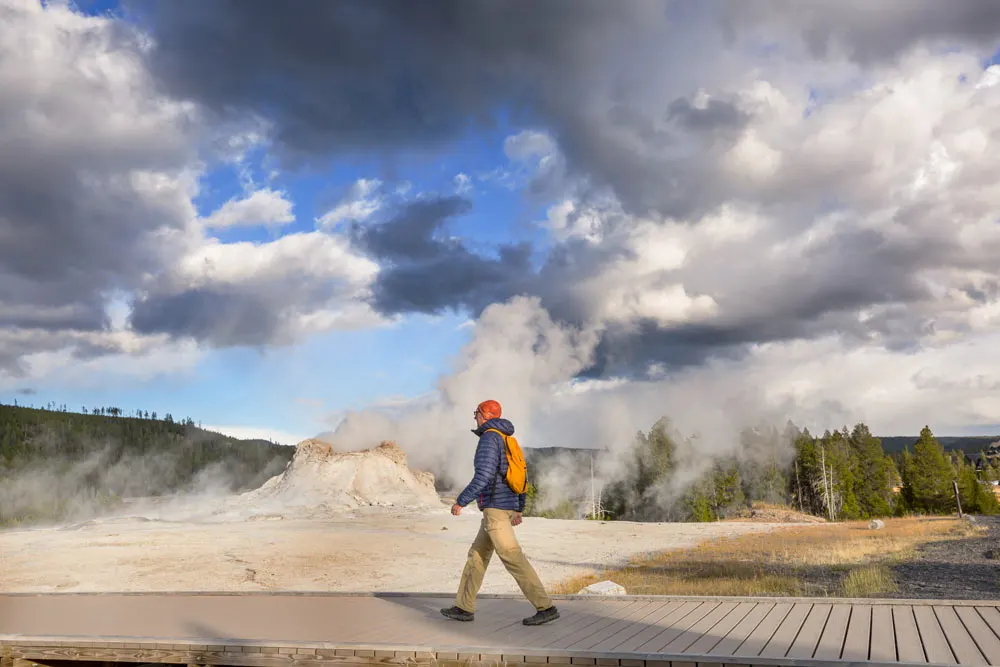
What to pack for Yellowstone National Park
Packing appropriately is crucial for an enjoyable and safe visit to Yellowstone National Park. Essential items include layers of clothing to adapt to the park’s rapidly changing weather conditions, which can vary dramatically between sunny afternoons and chilly evenings.
Sturdy hiking gear, including comfortable boots, a reliable backpack, and a refillable water bottle, is necessary for exploring the park’s extensive trail system.
Navigation tools such as maps, a GPS device, and a compass are indispensable for finding your way around the vast wilderness.
Wildlife watching is a highlight in Yellowstone, so bringing binoculars or a spotting scope can greatly enhance your experience.
Additionally, safety items like a well-stocked first aid kit, bear spray for unexpected encounters, and a flashlight or headlamp for low-light conditions are essential.
Don’t forget sunscreen and insect repellent to protect against the elements. Also, a hat and sunglasses will protect you from the sun during those bright days exploring the park’s incredible landscape.
Staying Safe in Yellowstone
Safety is paramount in the wilderness of Yellowstone National Park.
Always maintain a safe and respectful distance from wildlife; these are wild animals, and their behavior can be unpredictable. Feeding animals is strictly prohibited as it disrupts their natural foraging habits and can lead to dangerous encounters.
In geothermal areas, it’s crucial to stay on designated boardwalks and trails; the ground near hot springs and geysers can be fragile and dangerously hot.
Weather in Yellowstone can change rapidly, so be prepared with appropriate gear, especially if you plan to hike or camp in the park. Before setting out on any trails, check the weather forecast and be ready for sudden showers or temperature drops.
Familiarize yourself with the signs of hypothermia and heat exhaustion, as both can be risks in the park’s diverse environments.
Remember that cell phone reception can be spotty, so let someone know your plans before venturing into remote areas.
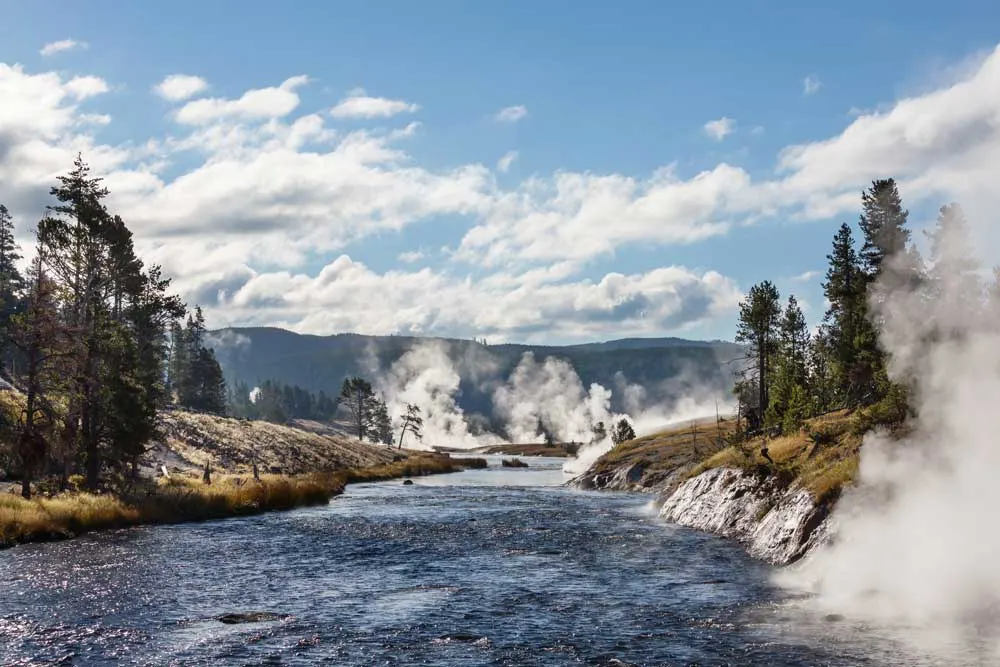
Respect the Environment
When visiting Yellowstone National Park, it’s essential to practice the principles of Leave No Trace to help preserve its natural beauty for future generations.
Carry all your trash out of the park, and stay on designated trails to minimize your impact on the delicate ecosystem.
The park is home to diverse wildlife, and it’s important to respect their habitats and adhere to park regulations designed to protect these animals. When camping, use established sites and keep a clean camp to avoid attracting wildlife.
Avoid picking plants or removing natural features, and use established restrooms or follow guidelines for waste disposal in backcountry areas. Keeping a safe distance from thermal features not only ensures your safety but also protects these fragile formations.
Educating yourself about the park’s guidelines and regulations before your visit is an important step in being a responsible visitor.
Planning a trip to Yellowstone National Park is an exciting adventure that requires thoughtful preparation.
From selecting the right time to visit, choosing appropriate transportation, booking accommodations, planning your itinerary, packing essentials, to prioritizing safety and environmental conservation, each step contributes to an unforgettable experience in one of America’s greatest natural treasures.
Stay Creative!
Thank you for your support and love for Creative Travel Guide. If you are looking for more video tips, make sure to head over to your YouTube channel and follow us on Instagram for daily tips and chats.
Share any questions or comments below and happy creative travels!

